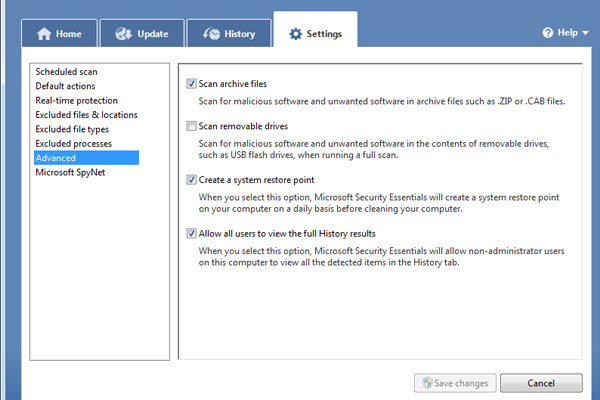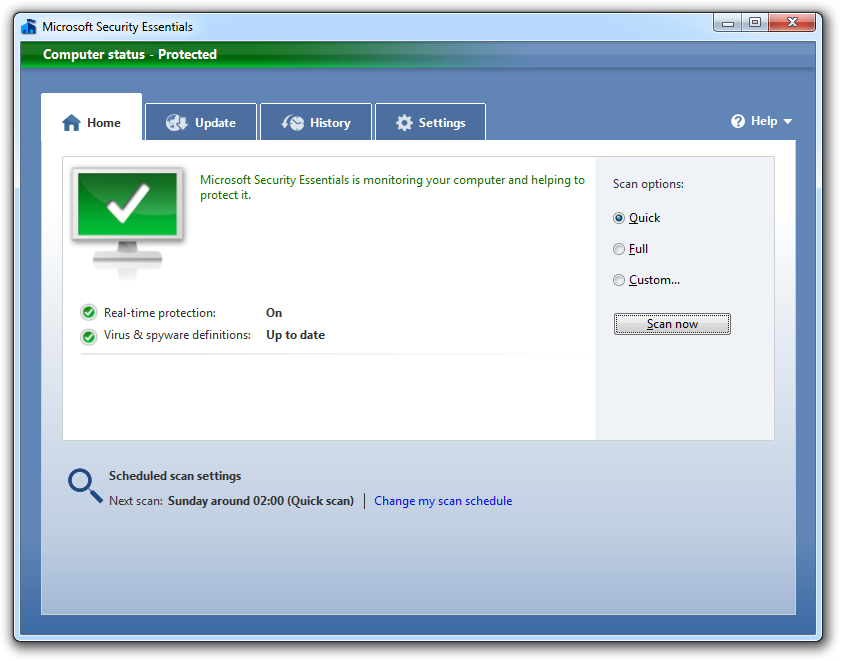Microsoft Security Essentials review
Microsoft is having a second stab at the anti-virus suite, only this time its package is free. Has it got it right second time around?

This free antivirus software doesn’t set out to protect you from every possible danger. That may sound like a weakness, but it makes for a simple, lightweight package. There’s now no excuse for not running security software on every Windows PC.

Security Essentials is Microsoft's second go at producing a standalone security package for Windows.
It replaces the now-discontinued Windows Live OneCare, but takes a fundamentally different tack. Where OneCare was a commercial package, positioned as a comprehensive security solution, Security Essentials is free and as the name implies keeps things as simple as possible.
In practice, that means a minimal feature set. Security Essentials doesn't use fancy cloud analysis or sandboxing techniques like most commercial antivirus packages. It adds nothing to the standard Windows firewall, and makes no attempt to warn the user away from phishing websites or hijacked pages.

But it will check the files on your hard disk and intercept known malware before it can wreak havoc. That should be enough to keep you safe from the vast majority of online nasties, be they worms, viruses, Trojans or whatever.
And in our tests, Security Essentials did indeed detect almost all of the malware we pitted it against, picking up 96 per cent of our selection of live files. That's a very creditable score, though Avira's free AntiVir package scored 100 per cent.
The no-frills approach brings some collateral benefits too. In terms of ease of use, Security Essentials is hard to beat. Its interface comprises just four tabs, labelled "Home", "Update", "History" and "Settings". It's laughably easy to get an at-a-glance view of your protection status and launch manual database updates (regular updates come down with Windows Update, making it effortless to manage Security Essentials in a business context). You can also check detected items, and access simple options such specifying folders and file types to ignore.
Get the ITPro daily newsletter
Sign up today and you will receive a free copy of our Future Focus 2025 report - the leading guidance on AI, cybersecurity and other IT challenges as per 700+ senior executives
Darien began his IT career in the 1990s as a systems engineer, later becoming an IT project manager. His formative experiences included upgrading a major multinational from token-ring networking to Ethernet, and migrating a travelling sales force from Windows 3.1 to Windows 95.
He subsequently spent some years acting as a one-man IT department for a small publishing company, before moving into journalism himself. He is now a regular contributor to IT Pro, specialising in networking and security, and serves as associate editor of PC Pro magazine with particular responsibility for business reviews and features.
You can email Darien at darien@pcpro.co.uk, or follow him on Twitter at @dariengs.
-
 Westcon-Comstor and Vectra AI launch brace of new channel initiatives
Westcon-Comstor and Vectra AI launch brace of new channel initiativesNews Westcon-Comstor and Vectra AI have announced the launch of two new channel growth initiatives focused on the managed security service provider (MSSP) space and AWS Marketplace.
By Daniel Todd Published
-
 Third time lucky? Microsoft finally begins roll-out of controversial Recall feature
Third time lucky? Microsoft finally begins roll-out of controversial Recall featureNews The Windows Recall feature has been plagued by setbacks and backlash from security professionals
By Emma Woollacott Published
-
 The UK government wants quantum technology out of the lab and in the hands of enterprises
The UK government wants quantum technology out of the lab and in the hands of enterprisesNews The UK government has unveiled plans to invest £121 million in quantum computing projects in an effort to drive real-world applications and adoption rates.
By Emma Woollacott Published